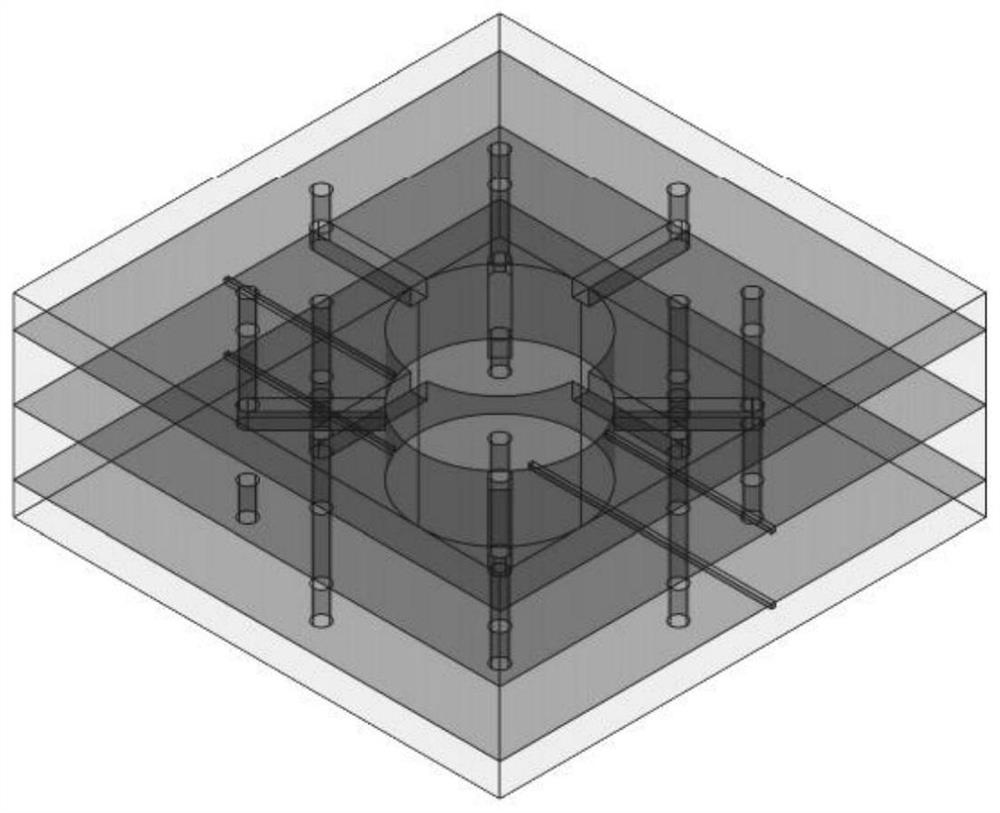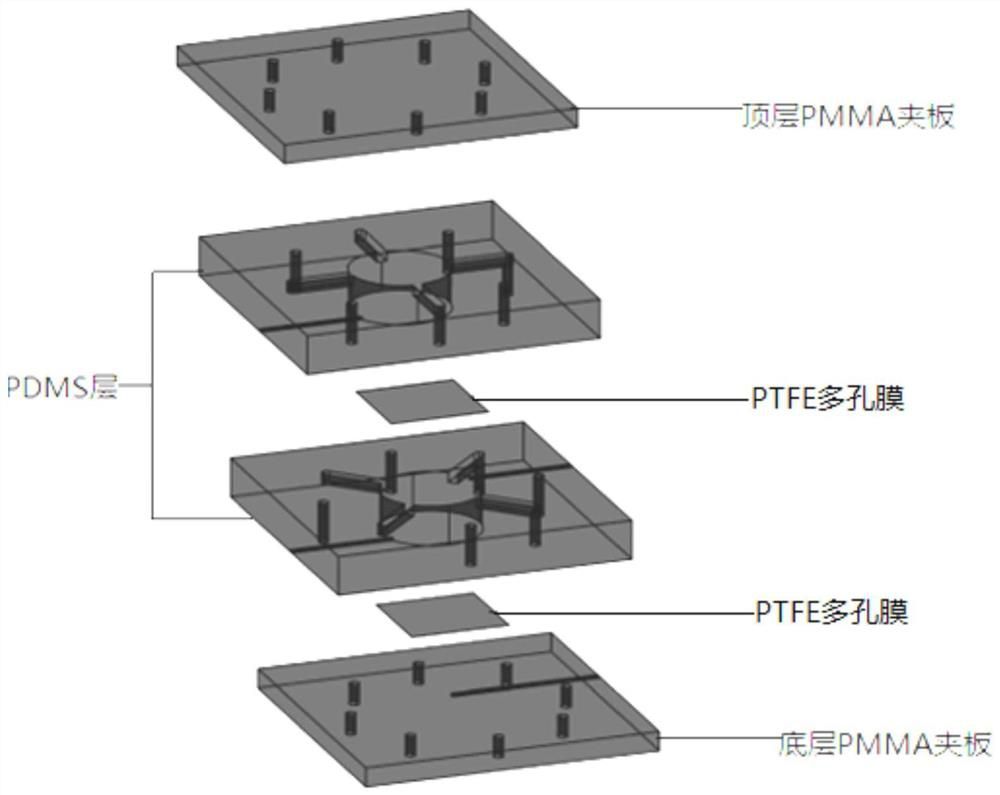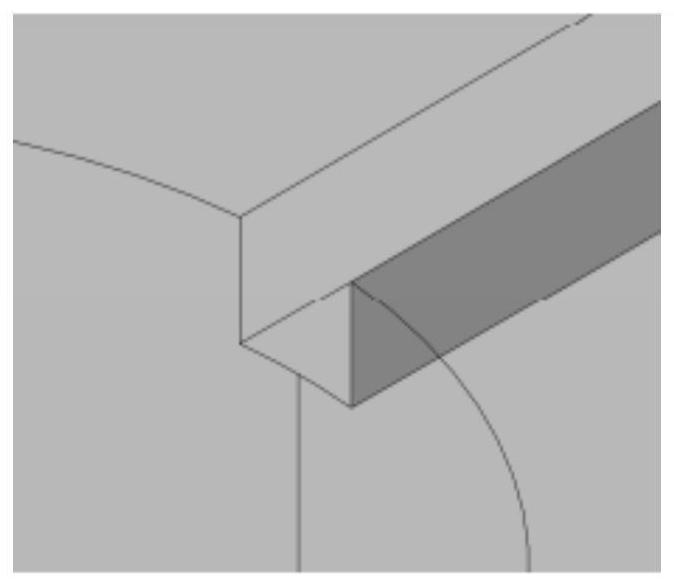Chip for simulating cerebral ischemia re-filled pathologic model
A technology of cerebral ischemia-reperfusion and pathological models, applied in the field of microfluidics, can solve problems such as unethical and low success rate of drugs, and achieve convenient observation, cultivation and detection, real-time and accurate monitoring, verification of rationality and feasibility sexual effect
- Summary
- Abstract
- Description
- Claims
- Application Information
AI Technical Summary
Problems solved by technology
Method used
Image
Examples
Embodiment 1
[0029] A cerebral ischemia-reperfusion pathological model chip based on microfluidic technology, the chip is mainly composed of four-layer chips, and the overall effect is shown in the figure. figure 1 As shown, the specific bonding sequence is shown in the appendix of the manual. figure 2shown. The first layer chip and the fourth layer chip are made of polymethyl methacrylate (PMMA), and the second layer chip and the third layer chip are made of polydimethylsiloxane (PDMS) as the processing material. The enlarged view of the connection between the channel of the culture fluid in the microfluidic chip and the middle culture hole is as follows image 3 As shown, the size of each layer of chips is the same, the length and width are both 30mm, and the heights of the four layers of chips from top to bottom are 2mm, 4mm, 4mm, and 2mm in sequence. After the chip is packaged as a whole, a microfluidic chip with a length of 30mm, a width of 30mm and a height of 14mm is finally form...
PUM
| Property | Measurement | Unit |
|---|---|---|
| radius | aaaaa | aaaaa |
| radius | aaaaa | aaaaa |
| thickness | aaaaa | aaaaa |
Abstract
Description
Claims
Application Information
 Login to View More
Login to View More - R&D
- Intellectual Property
- Life Sciences
- Materials
- Tech Scout
- Unparalleled Data Quality
- Higher Quality Content
- 60% Fewer Hallucinations
Browse by: Latest US Patents, China's latest patents, Technical Efficacy Thesaurus, Application Domain, Technology Topic, Popular Technical Reports.
© 2025 PatSnap. All rights reserved.Legal|Privacy policy|Modern Slavery Act Transparency Statement|Sitemap|About US| Contact US: help@patsnap.com



